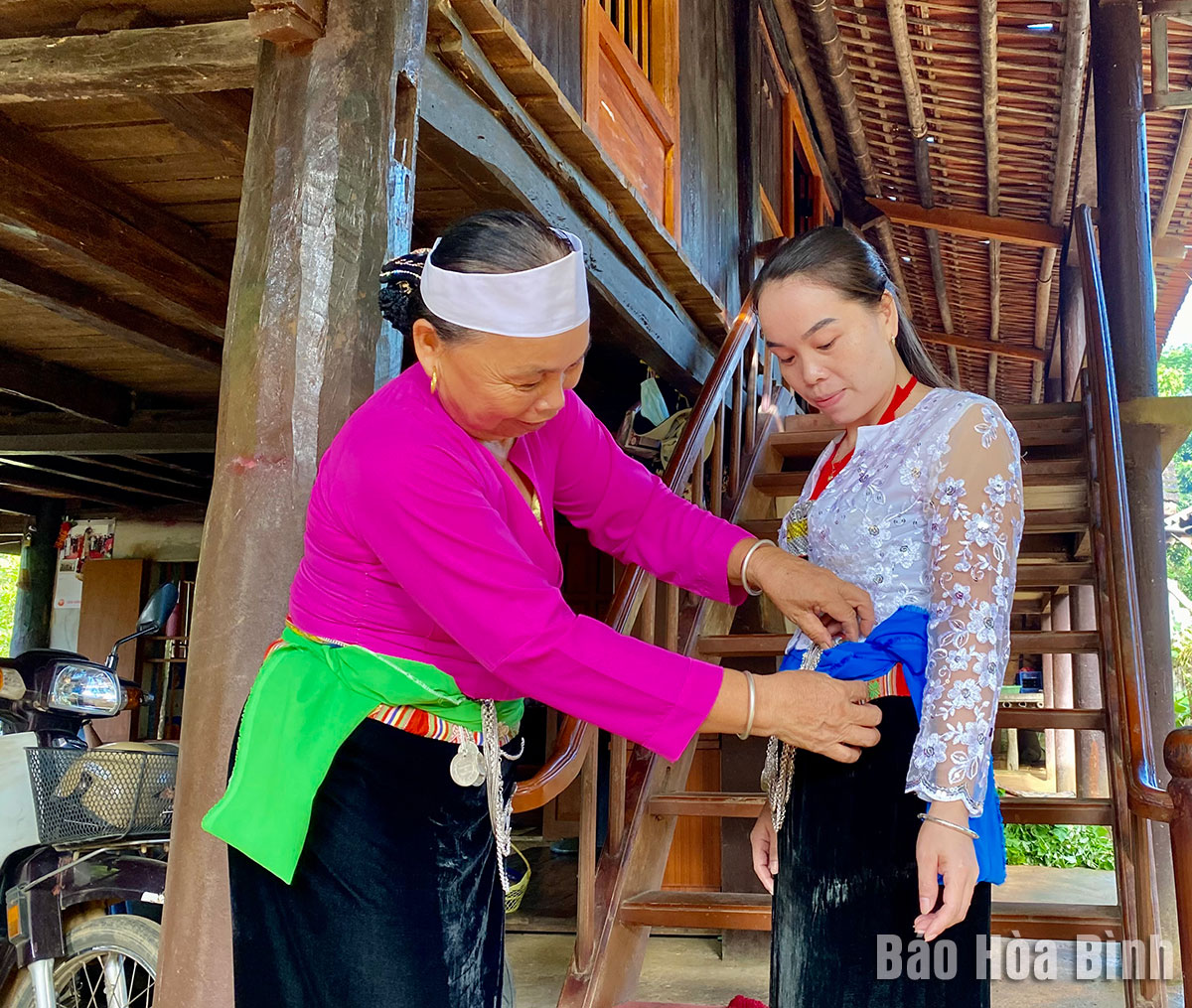(HBO) – Through their daily life and work, Muong ethnic people in Hoa Binh province have created, developed, and upheld distinctive cultural values. A contributor to their unique culture is traditional costumes and the art of decorating skirt waistbands.
A woman in Muong Vo area of Lac Son
district teaches a younger one how to show patterns on a waistband of a
traditional costume.
About the traditional costume of Muong women,
Professor Nguyen Tu Chi (1925 - 1995), a leading ethnologist of Vietnam in the
20th century and also an expert in the Muong ethnic group and traditional
villages of Vietnamese people, used to write that Muong people do not carve in
wood, stone, ceramics or metal, not make wooden, stone, earthen or bronze
statues, but they weave their aesthetic conceptions on women’s skirt
waistbands.
Bui Kim Phuc, head of the culture management
division of the Hoa Binh provincial Department of Culture, Sports and Tourism,
said Muong people’s art of decorating traditional costumes with patterns dates
back a long time ago. It reflects the ancient Vietnamese’s viewpoint on the
life and also demonstrates the aesthetic conceptions, creativity, and
skillfulness of makers. Women are the creators of the art and also the key
persons in preserving and passing down the essence of this art to following
generations.
However, the art of decorating traditional skirt
waistbands is facing the risk of disintegration. The Department of Culture,
Sports and Tourism has conducted a survey in some localities and found out the
declining use of traditional costumes in the community. Only few people, mainly
the elderly, can practice the decoration of costumes nowadays while the young
do not have a passionate interest in the art.
Bui Thi Niem, Director of the department, said
the creation of patterns on skirt waistbands of Muong people is a traditional
craft. Over the past years, provincial authorities have paid great attention to
the preservation and promotion of cultural heritage values, including costumes
of ethnic minority groups.
She held that to uphold and bring into play the
art, aside from cultural heritage management measures from the provincial to
grassroots levels, the province also needs to increase communications to
introduce and popularise the beauty as well as cultural and historical values
of traditional costumes to all people, including the young and Muong children.
That will help improve public awareness of the costumes’ special values, and
inspire the national pride among people so that they have a higher sense of responsibility
towards preserving and promoting traditional costumes’ values.
Besides, it is necessary to research, collect,
and record images of traditional costumes and their use in each circumstance to
strengthen the basis for restoration, preservation, and promotion. Authorities
should include this art in the curricula of local schools, especially boarding
schools with many Muong ethnic students.
Niem also suggested studying and recovering
ancient patterns, preserving decoration techniques, and turning the traditional
costumes of Muong people into a unique and attractive tourism product.



